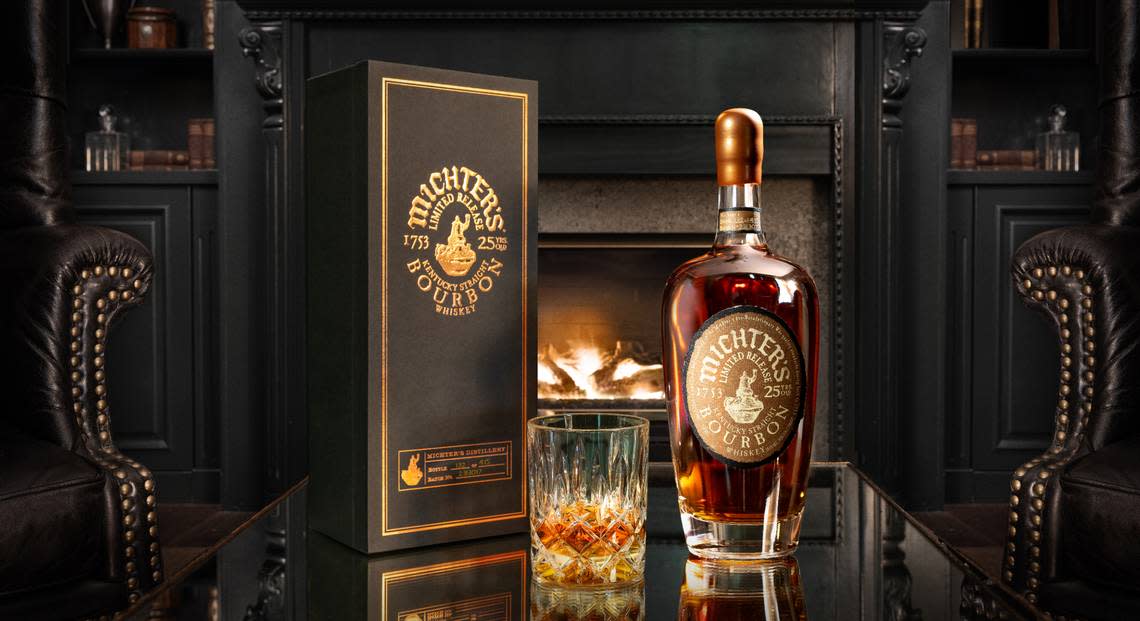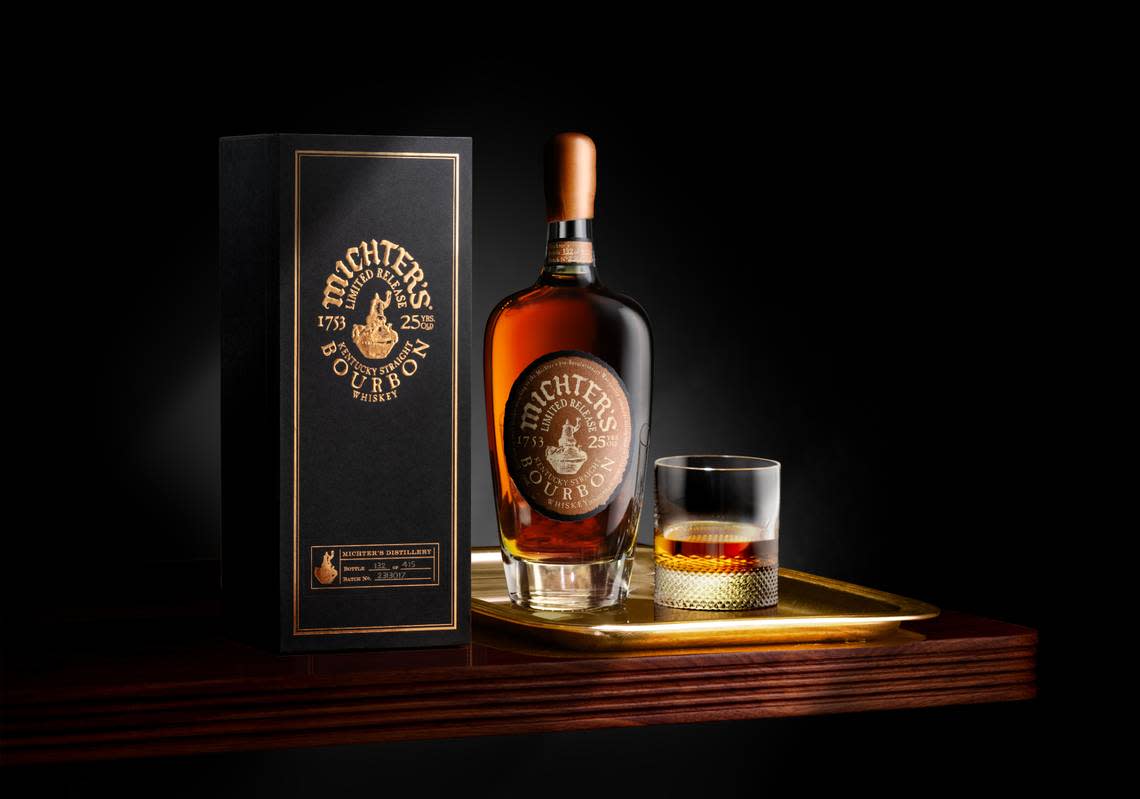The science behind Michter’s latest rare 25-year-old bourbon
In the world of bourbon, a liquid that’s over the legal drinking age has rarely been a reliable indicator of quality, but that is starting to change.
A growing band of American producers are attempting to align price, age and excellence. In 2017, Pappy Van Winkle released a 25 Year Old Bourbon — its oldest release ever. Buffalo Trace’s Eagle Rare 25, released in October, and Diageo’s Orphan Barrel Rhetoric are leveraging a novel blend of technical know-how and barrel management to aid in the task. And they’re coming away with some compelling results.
Sign up for our LexGo Eat & Drink newsletters
The latest on food, dining and bourbon delivered right to your inbox for free. See what's happening in the world of bourbon, including buying, tasting tips and more on Tuesday. Stick around for the biggest restaurant news in Central Kentucky on Thursday. Sign up here.
In November, Michter’s 25 Year Old Bourbon was released. Although the Kentucky distillery has been pushing the outer limits of luxury American whiskey for over a decade, this is just the fifth time since 2008 that the brand has released a liquid that’s been aged for 25 years.
It’s Kentucky straight bourbon that Michter’s president Joe Magliocco and Steve Ziegler, a longtime colleague overseeing sales, tasted and purchased more than 20 years ago. (Michter’s became a licensed distiller in 2012; before that they tasted through various Kentucky barrels that had already laid down and were maturing to source the type of barrels that they would hope to one day emulate themselves.)

By 2015, the company had built its own distillery in the Shively section of Louisville, and the barrels that would become the 25 Year Old were moved into purpose-built warehouses, specially designed to gently massage bourbon through protracted periods of rest. Around that same time, the company brought on industry veteran Andrea Wilson, who previously oversaw Diageo’s US and Canadian distillation and aging programs, to monitor the maturation.
Part of that job requires being exceptionally fastidious about analyzing the liquid as it ages. It involves more than just old-fashioned organoleptic sampling of the older stocks — though that’s clearly the most fun part. Wilson says that whiskey undergoes quantifiable chemical changes as it interacts with its oak enclosure. The density of wood sugars extracted into the liquid, for example, can be measured in its state-of-the-art lab using equipment more commonly found in a chemistry lab, including gas chromatography/mass spectrometry (GC-MS), also used in drug testing for athletes.
But it also required redesigning the physical layout of the warehouse to accommodate lengthier aging. “Many warehouses in Kentucky are seven floors high, so the top floors can mature the whiskey much faster than lower floors,” Wilson says. “Michter’s rickhouses are based on a standard of four floors, with each floor having three steel rack tiers for storing three barrels high on each floor.”
On top of that, Wilson explains that airflow, temperature and humidity can all be managed within the space, to dial in “desired outcomes for all of our products.”
Flavien Desoblin, owner of the Brandy Library in Lower Manhattan, says this is a new development. “For the longest time, there was no culture of nurturing bourbon to raise the spirit-what they call ‘élevage’ in cognac,” he says. “The industry preference was for static aging, accelerated by Kentucky’s beneficial annual heat cycles.”
How many bottles of Michter’s 25 Year Old Bourbon are there?
But today’s collectors want rare unicorns that they can brag about. “So bourbon makers started exploring dynamic maturation,” Desoblin continues, “realizing that lower floors age whiskey more gracefully over a longer period of time, with lower temperatures and less drastic temperature swings.”
Michter’s has been at the vanguard of American élevage, but when it comes to a 25-year-old bourbon, there’s a frustratingly thin line between wood-fueled complexity and overly oaked swill. The elusive nature of that sweet spot is evidenced by just how few bottles of this expression ever ship out to shelves. Michter’s won’t reveal the exact numbers this time around, but a 2017 edition consisted of just 316 decanters.

“It allows us to examine the chemistries of our whiskeys over time,” she says. “All of this knowledge, both qualitative and quantitative, is used to predict a whiskey’s readiness for disgorging.”
For the 25 Year Old release, Wilson and her team focused on just a handful of barrels befitting a very narrow flavor profile. There’s cacao nibs in the nose, a silky, nuttiness to the mouthfeel, then dark chocolate-dipped berry fruit characterizing a vibrant finish. Ultimately, it’s rich and robust without overdoing the astringent oaky notes, which can ruin a less meticulously managed cask.
“I am a sucker for older spirits, just like wines, but they can’t all mature gracefully,” warns Desoblin. “Sometimes they don’t have the genetics for it; sometimes their environment doesn’t allow it.”
When they do, it results in a mouthful of magic for any whiskey lover, most often those with deep pockets. The 116.2-proof offering is set to retail at $1,500. Finding it at that price this holiday season would be nothing short of a Christmas miracle; the original bottling from 15 years ago is currently listed online for $50,000.
